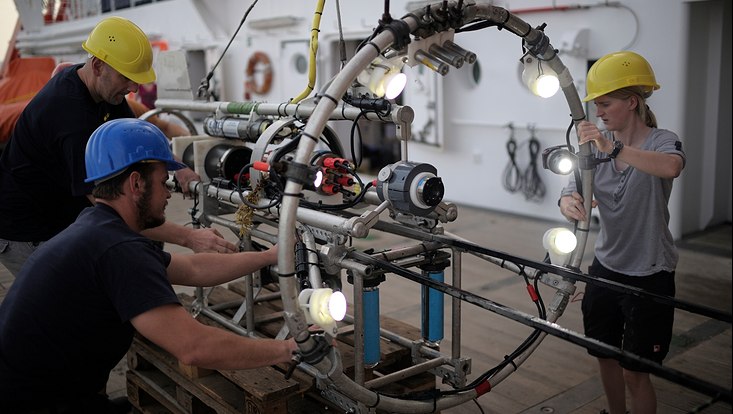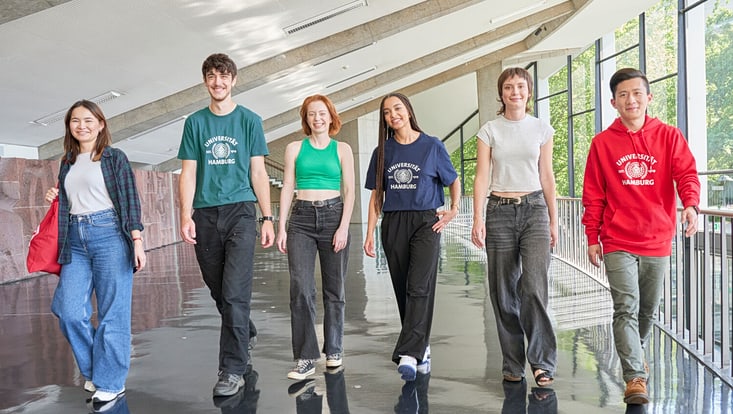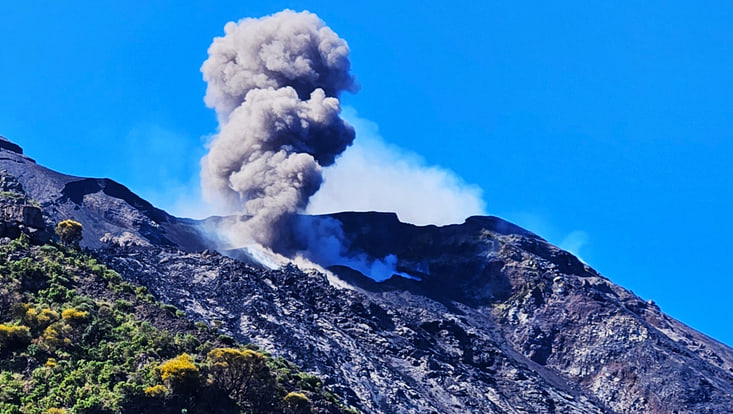On an expedition with a towed camera and underwater robotInternational expedition sets sail to explore deep-sea habitats around Madeira
9 February 2024, by Geomar, Kiel

Photo: Solvin Zankl
Jellyfish are notoriously difficult to study because they are extremely fragile and therefore difficult to catch intact with nets. As a result, the contribution of jellyfish to the oceanic food web remains largely unexplored. An international expedition with experts from different fields of research sets off today to explore unknown underwater habitats and their biodiversity around the island of Madeira. On board is Prof. Nicole Aberle-Malzahn from CEN, who will be studying microzooplankton throughout the overall water column.
“It is very likely that we will discover new species on this cruise,” says Dr Jan Dierking. The marine biologist from the GEOMAR Helmholtz Centre for Ocean Research Kiel is the chief scientist of the expedition MSM126 “Jellyweb Madeira” on the German research vessel MARIA S. MERIAN, which sets off today to explore the underwater habitats around Madeira. The planned investigations will mainly focus on the deep sea, which is still largely unexplored. Down there it is dark, cold and there is enormous pressure. Above all, the deep sea is deep. In combination, this means that sampling and observing deep-sea systems is extremely difficult.
During the cruise, the international team of 22 scientists from five countries, will use a wide range of state-of-the-art instruments and technologies, including remote sensing, camera systems, a deep-sea robot, oceanographic sensors and various nets, to shed light on deep-sea biodiversity and food webs.
A photo and video system films and photographs the seabed for mapping purposes. A deep-sea camera system equipped with a camera and sensors can be used day and night in open water and makes it possible to document living organisms in their natural environment. The scientists hope to find previously undiscovered habitats such as coral gardens or deep-sea reefs, which they can then return to for targeted sampling.
For sampling, they have a remote-controlled underwater robot with them that can dive to depths of up to 2,000 meters and transmit high-resolution live videos from the deep sea to the surface via a fibre optic connection. In open water, a "slurp gun", a kind of vacuum cleaner, is used to gently collect the sensitive gelatinous organisms - "a huge opportunity to bring deep-sea species to the surface undamaged and describe them". On the seabed, the robot will take samples of sediments, corals and sponges. It will also serve as a platform for experiments on food falls, i.e. what sinks from the upper layers of the ocean. "We want to see how the creatures in the open water are connected to the deep sea: Who eats whom here, who is in competition with whom?" explains Dr. Jan Dierking.
What role does gelatinous zooplankton, or jellyfish, play in the oceanic food web? There is still not much knowledge about this, as it is difficult to study jellyfish. They are very fragile and difficult to catch unharmed with nets, which is why their importance for the food web is probably underestimated. Co-chief scientist Dr. Henk-Jan Hoving: "This group of creatures is very diverse. Some of them can reach a length of several meters. Some are predators that eat crustaceans, fish or other gelatinous organisms. Others feed on detritus, the dead and decaying material that is abundant in the water column."
The food web of gelatinous organisms, also known as the jellyweb, therefore probably plays an important role in the processing of organic material, as jellyfish can occur in large numbers, says the deep-sea expert. And if such a "jellyfish bloom" dies, a very large amount of biomass may also sink. Dr. Jan Dierking: "For many regions, we still don't know how much of it actually ends up on the seabed and who feeds on it." The jellyweb could play a key role in oceanic food webs and also be significantly involved in the export of carbon to the deep sea.
More information
Project funding:
The expedition is funded by the Federal Ministry of Education and Research (BMBF) and the German Research Foundation (DFG).
Blog:
https://www.oceanblogs.org/msm126/
Image material:
Images are available for download here: www.geomar.de/n9332


